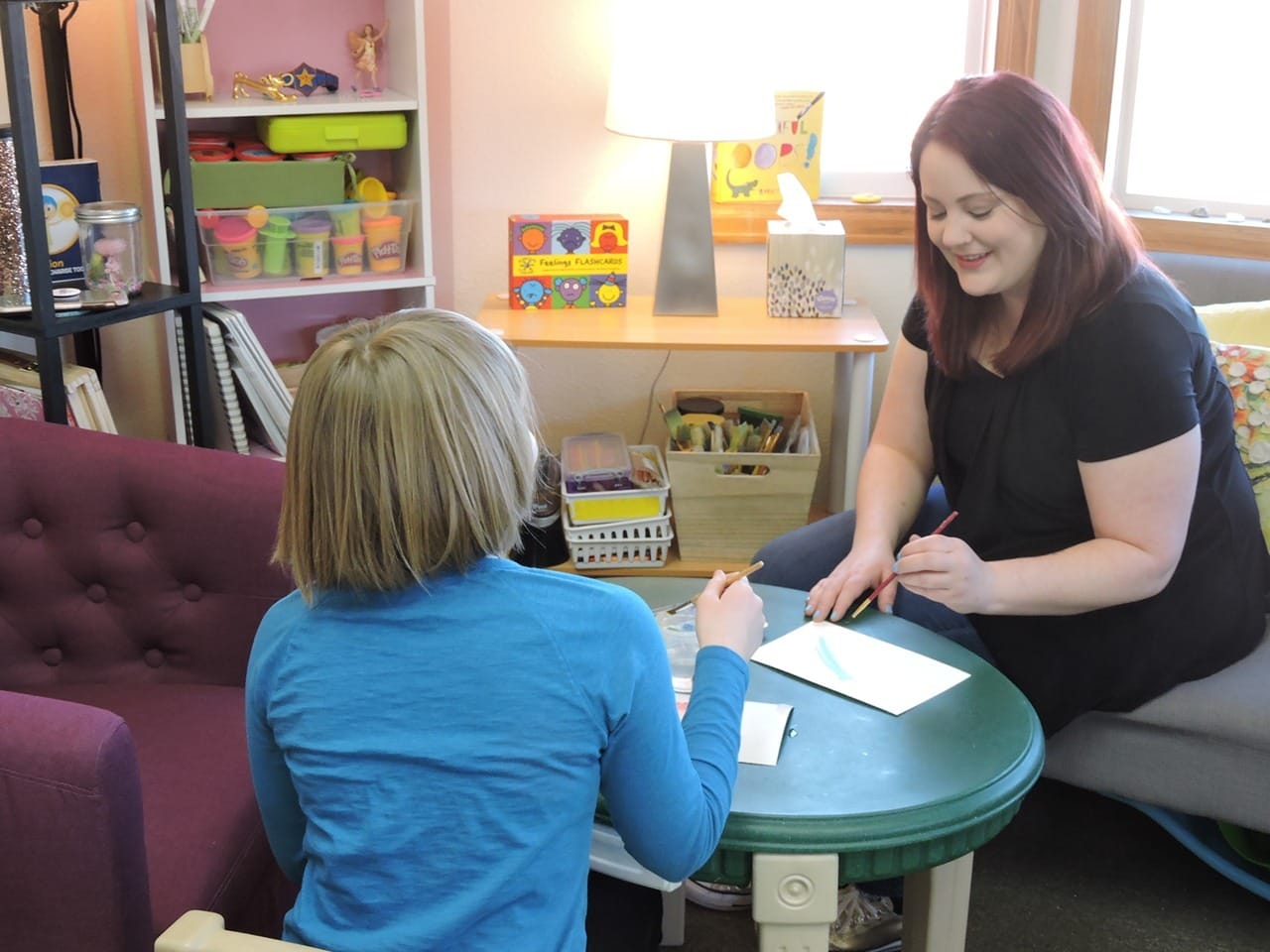Do you always feel trapped inside that traumatic event? Do you feel like you will never be free of its dark shadow in this life? Are you desperate for a peaceful mind but there is just no light at the end of the tunnel? If you feel like this, we are here to help.
Also, have you tried everything under the Sun, done everything by the book… but you can’t leave your trauma behind? We admit that it is very difficult to let go of your trauma. But what if you can find a treatment method that can help you get rid of it? Won’t you want to know everything about it?
Here it goes. You will learn about the transformative power of CBT for trauma in this blog post. What’s more, you can verify its benefits, techniques, and results with the amazing case study of Paul.
Definition of CBT and Its Relevance to Trauma
Cognitive Behavioral Therapy (CBT) is a very popular therapy that focuses on recognising and resolving your negative thoughts and behaviours. It gives wonderful results for treating traumas.
Why? Because it helps you find out exactly where your thinking gets negative… and how you can change it into positive. You can change your body’s reactions to triggering situations once you succeed in changing your POV.
Prevalence of Trauma and PTSD
Most of us go through some kind of trauma in our lifetime. It may be: physical or emotional abuse, accidents, natural disasters, or witnessing violence. According to the National Study of Mental Health and Wellbeing 2020–2022, almost 11% of Australians have PTSD (lifetime prevalence).
Sadly, women are at almost twice the risk of men (14% and 8%, respectively) (ABS 2022). This research highlights the fact that trauma affects way more people than you might have assumed. That’s why you need treatments with faster results. Trauma-Focused Cognitive Behavioural Therapy (TF-CBT) is one such evidence-based approach.
What is Trauma-Focused CBT?
Trauma-focused CBT (TF-CBT) is a specialised form of CBT. It is designed to help people who cannot live life peacefully due to their trauma(s). Therapists combine custom CBT methods with more useful strategies to help you process hurtful memories. TF-CBT includes awareness about trauma, teaching you relaxation skills, and helping you realign your thoughts.
Benefits of CBT for Trauma
Have a look at how CBT can help you get rid of your trauma:
Reduction in PTSD Symptoms
It reduces your PTSD symptoms. Those flashbacks, nightmares, and tightness in your chest? You may feel them less and less as you would take sessions.
CBT allows for a reduction in the intensity and frequency of these symptoms by helping you process traumatic events and challenge the associated negative thoughts. You can feel that your behaviour and routine are definitely shifting to become more normal than before.
Decreased Anxiety and Depression
Trauma can increase your depression and anxiety more than just double… you might feel it ten-fold! CBT will address the root causes of these feelings. It will help you change your depressing thought patterns.
This process not only curbs bodily symptoms but also gives you tools to manage anxiety and depression in the long term… even after you discontinue therapy.
Related Read: Trauma Therapy: Definition, Types, Techniques, and Efficacy
Improved Emotional Regulation
Emotional regulation is a skill that you must learn if you want to spend a peaceful life. This treatment method teaches you tips and hacks to manage your emotions.
Benefit? You may show less tantrums, emotional outbursts, and feelings of “too much”. As a result, your confidence level will also increase because you will be more in control of yourself.
Increased Personal Resilience
CBT increases your capability to face and get rid of traumatic events head-on. You become emotionally stronger as you develop a better understanding of your experiences. So, you learn to manage your reactions.
As a result, you become more confident to handle any mishaps or triggering situations in the future.
Enhanced Coping Strategies
CBT gives you enough weapons to fight your demons; stress, trauma triggers, and other hurtful situations. These coping strategies teach you healthier ways to manage negativity. Hence, your general mental health and well-being get better.
Better Relationships and Self-Esteem
Successful CBT for trauma helps you improve your relationships with friends, family, and colleagues. It increases your self-esteem too.
You can better your communication skills, empathy, and emotional closeness with others once you Understand and process your trauma. Additionally, it helps you regain your self-worth and build a positive image in your own eyes.
Long-Term Mental Health Benefits
You can use the skills and strategies you learn during therapy to maintain your mental health and well-being. Basically, you get long-lasting coping tools for life. You learn:
Pro tips to manage stress
Dispel negative thoughts as soon as they enter your mind
Building and keeping positive behaviours
Techniques in CBT for Trauma
Understanding the specific techniques used in Cognitive Behavioral Therapy can provide valuable insight into how this therapy effectively addresses trauma.
These techniques are designed to help you process your experiences, manage symptoms, and build resilience. Some of the most impactful techniques employed in CBT for trauma are:
Cognitive Restructuring
Cognitive restructuring involves identifying and changing negative thought patterns that contribute to emotional distress.
By challenging these thoughts and replacing them with more realistic and positive ones, you can decrease trauma-related symptoms and improve your mental health.
Relaxation Techniques
Relaxation techniques such as deep breathing, progressive muscle relaxation, and mindfulness are often incorporated into CBT for trauma.
These methods help you manage physiological arousal and reduce the physical symptoms of anxiety and stress, promoting a sense of calm and well-being.
Narrative Techniques
Creating a narrative of the traumatic experience can be a powerful therapeutic tool.
By recounting the event in a structured and supportive environment, you can gain a better understanding of what happened and integrate the experience into your overall life story. This process helps in reducing the emotional impact of the trauma.
Behavioural Activation
Behavioural activation focuses on engaging in meaningful activities to counteract the withdrawal and inactivity that often accompany trauma.
By encouraging you to participate in activities that bring you joy and satisfaction, CBT helps improve mood and overall mental health.
Combining CBT and Hypnotherapy for Trauma Relief
Combining Cognitive Behavioral Therapy (CBT) along with hypnotherapy doubles your coping ability for trauma. This method hits you on both the conscious and subconscious levels.
CBT focuses on recognising and resolving negative thought patterns and behaviours. On the other hand, hypnotherapy dives deeper into your subconscious that stores your traumatic memories and hardwired responses.
So, it allows for the reprocessing of traumatic events by accessing the subconscious. It helps you make new, positive neural pathways between your mind and body.
This rewiring at a deeper level makes deeper and lasting changes in your mental and emotional well-being. Combination of these two methods can speed your recovery and reduce your negative responses in less time.
Case Study: How Paul Conquered Trauma with CBT
We think that Paul’s story is a resounding proof that your mind and spirit are capable enough to fight your dark thoughts. Also, how Cognitive Behavioural Therapy (CBT) helps you to do it.
He pulled himself out of the depths of his trauma and got his life back together. He regained control of his emotions and how he reacted to hurtful situations.
Background
Paul was a middle-aged office worker. He was struggling to cope with PTSD for several years. He had a horrible car accident that not only injured him physically… but also damaged his psychological well-being badly.
He had flashbacks and nightmares. He also felt a never-ending sense of fear and helplessness.
His trauma almost crippled his life. He just couldn’t bear to be near a vehicle.
He couldn’t drive a car
He couldn’t sit in a car with another driver
He couldn’t even cross roads with busy traffic
He was avoiding hurtful and triggering situations. But it wreaked havoc in his job, social life, relationships, and health.
Finally, he had enough. He looked for a suitable treatment and found CBT.
Seeking Help
Paul’s recovery began the moment he reached out to a therapist specialising in CBT. How? Because accepting that you have an issue that needs a solution is the first step to getting better.
Paul realised that he needed professional guidance and support to regain control of his life.
The CBT Approach
Paul’s therapist discussed his history and triggers in detail. Then they designed an outline of CBT sessions for him.
Phase one of therapy was all about building a strong reputation… like a bond between Paul, his therapist, and the actual therapy process. The therapist also educated him about how his trauma was destroying his mind and body slowly.
He got to know that his behaviour was a normal response to his negative thoughts. It helped Paul feel less isolated and more hopeful.
Cognitive Restructuring
Cognitive restructuring was one of the core components of Paul’s CBT treatment. This involved recognising and resolving the negative thought patterns that increased his trauma-related anxiety.
Paul used to think, “I am not safe anywhere,” and “I cannot be in a car no matter what.” His therapist worked with him to find out exactly why he thought so.
Then, they helped him change those thoughts into positive mantras: “I can take precautions to stay safe” and “I can gradually get over my fears with support.”
Relaxation Techniques
Paul also learned various relaxation techniques to help speed up his cognitive restructuring: Deep breathing, gradual muscle relaxation, and mindfulness meditation.
Those methods helped him manage anxiety symptoms. They also gave him tools to calm his mind and body in triggering situations.
Outcomes and Progress
Paul’s commitment to therapy and his hard work paid off. He had remarkable reductions in his trauma-related symptoms over time.
He became more comfortable driving and being in cars. This allowed him to regain his independence and confidence.
His sleep improved
His nightmares became less frequent
The intensity and frequency of flashbacks reduced
Paul’s general quality of life got better beyond these tangible improvements too.
He reconnected with friends and family, took up the hobbies he had left behind, and his mind became much more peaceful.
Amazing Results
Paul’s recovery from PTSD shows how helpful CBT can be for trauma management. CBT gave him comprehensive tools to push his fears away.
He managed to change his POV about traumatic situations and turned his life around to become much better than before. His case study shows that you can push trauma away with the right support.
You can go for CBT to manage your trauma and make your mind more peaceful just like Paul.
In a Nutshell
CBT for trauma is a treatment method for PTSD, anxiety, and depression. It addresses your underlying cognitive distress and negative behaviours. If you or someone you know is stuck in trauma and can’t let go, go for CBT.
We specialise in combining hypnotherapy with CBT to provide you a wholesome treatment regime. Book a Free Consultation to step towards healing and pulling yourself out from the shadows of trauma.
Read Next: New Treatment for PTSD (Post-Traumatic Stress Disorder) The Proven PTSD Treatment Plan








